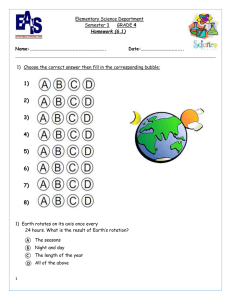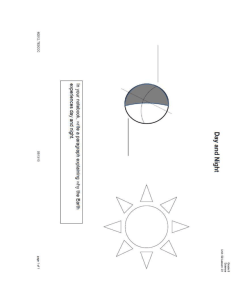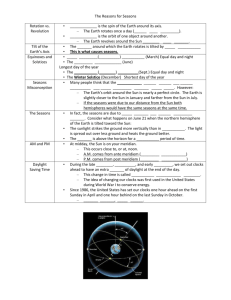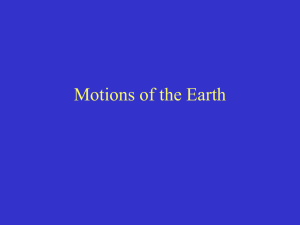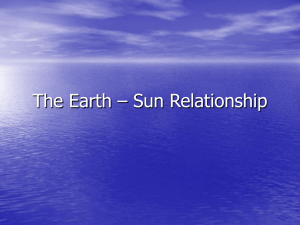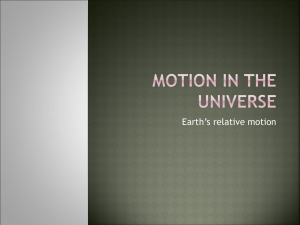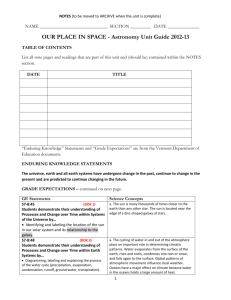Astronomy – Seasons Earth`s Size and Shape Earth is shaped like a
advertisement
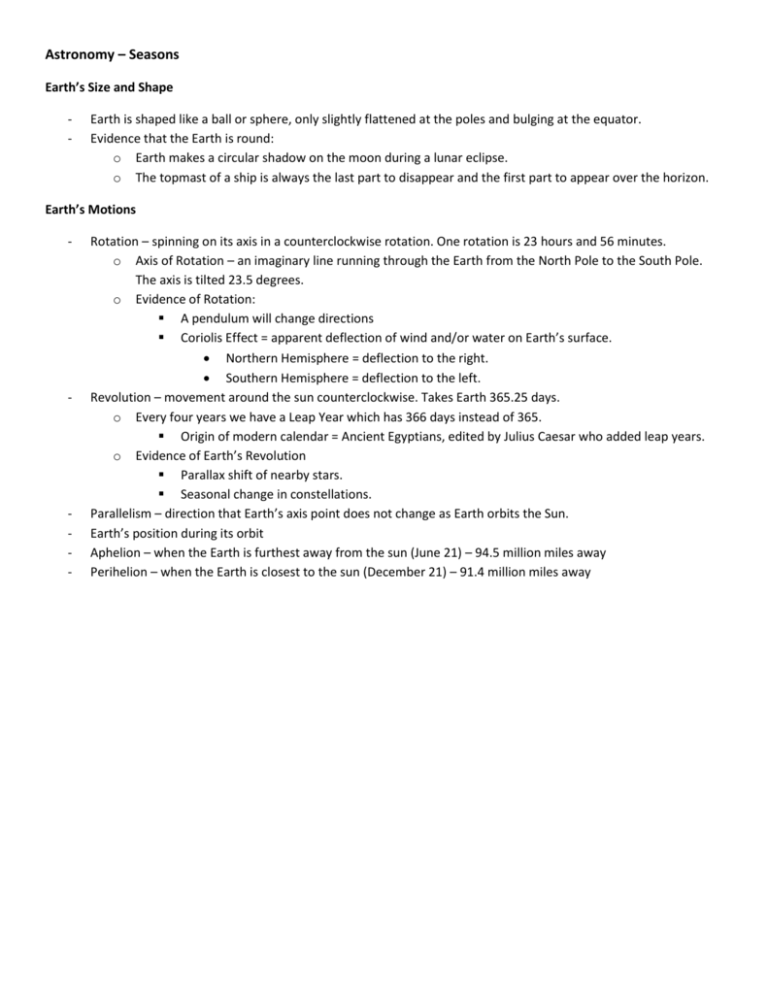
Astronomy – Seasons Earth’s Size and Shape - Earth is shaped like a ball or sphere, only slightly flattened at the poles and bulging at the equator. Evidence that the Earth is round: o Earth makes a circular shadow on the moon during a lunar eclipse. o The topmast of a ship is always the last part to disappear and the first part to appear over the horizon. Earth’s Motions - - - Rotation – spinning on its axis in a counterclockwise rotation. One rotation is 23 hours and 56 minutes. o Axis of Rotation – an imaginary line running through the Earth from the North Pole to the South Pole. The axis is tilted 23.5 degrees. o Evidence of Rotation: A pendulum will change directions Coriolis Effect = apparent deflection of wind and/or water on Earth’s surface. Northern Hemisphere = deflection to the right. Southern Hemisphere = deflection to the left. Revolution – movement around the sun counterclockwise. Takes Earth 365.25 days. o Every four years we have a Leap Year which has 366 days instead of 365. Origin of modern calendar = Ancient Egyptians, edited by Julius Caesar who added leap years. o Evidence of Earth’s Revolution Parallax shift of nearby stars. Seasonal change in constellations. Parallelism – direction that Earth’s axis point does not change as Earth orbits the Sun. Earth’s position during its orbit Aphelion – when the Earth is furthest away from the sun (June 21) – 94.5 million miles away Perihelion – when the Earth is closest to the sun (December 21) – 91.4 million miles away Seasons, Daylight, and Time Axial Tilt + Earth’s Revolution + Parallelism of Earth’s axis= The reason for our seasons!! (and changes in daylight!) Seasons and Daylight - - - - Seasons in the Northern Hemisphere are more extreme than seasons in the Southern Hemisphere. Why? Summer solstice o June 21st o Summer begins o Longest day of the year o Sun reaches its highest point in the sky o Earth is at is Perihelion. Winter Solstice o December 21st o Winter begins o Shortest day of the year o Sun is at its lowest point in the sky o Earth is at its Aphelion. Spring Equinox o Around March 21st o Spring begins o Sun is directly overhead at equator o All latitudes have 12 hours of daylight and nighttime Autumnal Equinox o Around September 21st o Fall Begins o The sun is directly overhead at equator. o All latitudes have 12 hours of daylight and nighttime Time - - Our month comes from the moon’s 29 ½ day cycle called synodic or lunar month. Sun and moon meet in the sky with every new moon. A synodic month is not the moon’s true orbit. A Sideral month is one moon orbit from new moon to new moon – 27 1/3 days A Sideral year is one complete Earth orbit relative to the stars. Time zones = Earth is divided up into 24 times zones of about every 15° longitude. o Times zones have been changed slightly over time to accommodate social, economic, and political reasons. o Times zones were established in 1883 o Times zones are set s the entire area is set to the same time and the next time zone west is an hour behind. AM = ante meridiem – before the middle of the day PM = post meridiem – after the middle of the day
